Protection of Women: Understanding the Domestic Violence Act
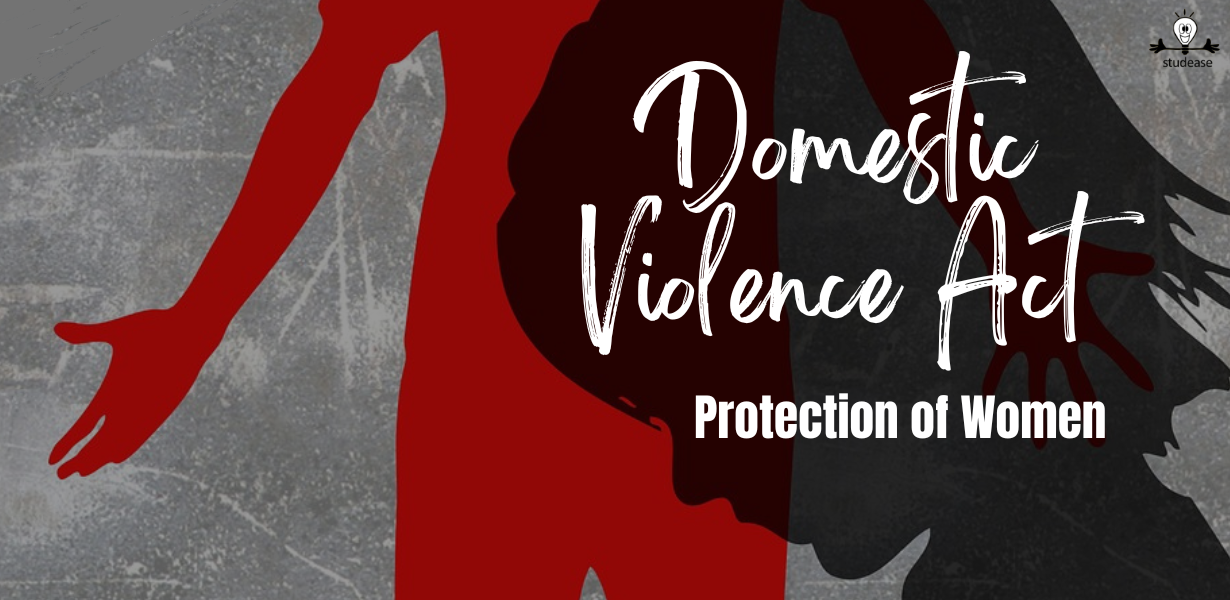
The Domestic Violence Act is a crucial piece of legislation that provides protection for victims of domestic violence, particularly women and children. The Act aims to prevent and eliminate violence within domestic relationships, ensure the safety of children who witness or experience domestic violence.
The Act recognizes the serious impact that domestic violence has on victims and their families, and seeks to provide them with the necessary support and resources to overcome the trauma and move forward.
DV Act also establishes legal remedies for victims, including restrain orders and other forms of protection, and provides funding for programs and services that assist victims of domestic violence.
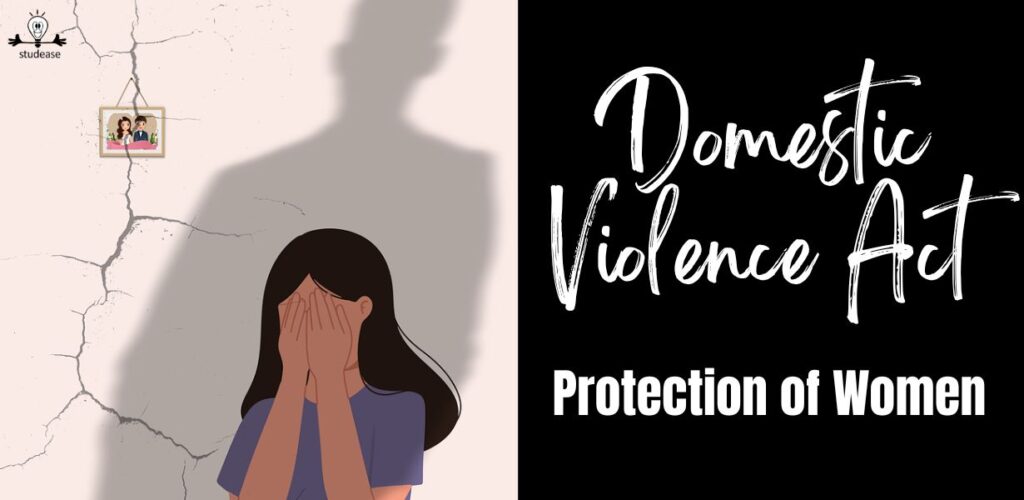
Domestic violence remains a pervasive problem in our society. It is important for individuals, communities, and policymakers to continue to raise awareness about the issue and work together to prevent and address domestic violence in all its forms.
Page Contents
Overview of Domestic Violence
Domestic violence is a serious issue that affects many individuals, especially women. It is a pattern of behavior that is used to establish power and control over another person through fear and intimidation. Domestic violence can take many forms, including physical, sexual, emotional, and economic abuse.
Definition of Domestic Violence
Domestic violence is defined as a pattern of abusive behavior in any relationship that is used by one partner to gain or maintain power and control over the other partner.
Domestic abuse, also known as intimate partner violence or domestic violence, refers to a repeated pattern of behavior in a relationship that is used to gain or maintain power and control over an intimate partner. This can take the form of physical, sexual, emotional, economic, or psychological actions or threats that influence another person.
The Protection of Women from Domestic Violence Act defines domestic violence in a series of steps or classifications. For the purpose of the domestic violence act, domestic violence is defined as any conduct that is delivered in a habitual nature and encompasses various forms of assault, which make the life of the aggrieved or inflicted person miserable.
Such behaviors may include frightening, intimidating, terrorizing, manipulating, hurting, humiliating, blaming, injuring, or harming someone. It is important to note that domestic abuse can happen to anyone, regardless of their race, age, sexual orientation, religion, or gender. Domestic violence affects individuals from all socio-economic backgrounds and education levels.
Statistics on Domestic Violence
According to the National Coalition Against Domestic Violence, 1 in 4 women and 1 in 9 men experience severe intimate partner physical violence, intimate partner contact sexual violence, and/or intimate partner stalking in their lifetime.
Types of Domestic Violence
There are several types of domestic violence, including physical, verbal and emotional, sexual, and economic abuse.
Physical abuse
Physical abuse is any intentional use of force that results in bodily injury, physical pain, or impairment. This can include hitting, slapping, pushing, or choking.
Verbal and emotional abuse
Verbal and emotional abuse is any behavior that is used to control, intimidate, or belittle another person. This can include name-calling, insults, threats, and isolation.
Sexual abuse
Sexual abuse is any sexual behavior that is forced on someone without their consent. This can include rape, sexual assault, and unwanted sexual contact.
Economic abuse
Economic abuse is any behavior that is used to control a person’s access to economic resources. This can include withholding money, preventing someone from working, or controlling someone’s access to financial resources.
Domestic violence is a serious issue that affects many individuals, especially women.
Domestic Violence Act: Protection of Women
Purpose of Domestic Violence Act
The Domestic Violence Act was enacted to provide protection for victims of domestic violence, prevent and eliminate violence within domestic relationships, ensure the safety of children who witness or experience domestic violence.
“An Act to provide for more effective protection of the rights of women guaranteed under the
Constitution who are victims of violence of any kind occurring within the family and
for matters connected therewith or incidental thereto.“
Who can file a Complaint?
Any woman who has been subjected to domestic violence by a husband, male partner, or a male relative can file a complaint under the Domestic Violence Act. The Act also covers family members who are victims of domestic violence.
Protection for Women Under the Domestic Violence Act
The Domestic Violence Act provides several protections for women who are victims of domestic violence. These protections include the right to obtain a protection order, the right to reside in a shared household without being subjected to violence, the right to custody of children, and the right to maintenance.
Procedure for Obtaining Protection Orders
To obtain a protection order under the Domestic Violence Act, a woman must file a complaint with the local magistrate or police station.
The complaint must include details of the domestic violence suffered by the woman. The magistrate will then issue an interim protection order, which will be served on the respondent (the person accused of domestic violence).
Enforcement of Protection Orders
Protection orders issued under the Domestic Violence Act are enforceable by law enforcement agencies. Violation of a protection order is a criminal offense and can result in imprisonment.
The Domestic Violence Act provides important protections for women who are victims of domestic violence. It is important for law enforcement agencies and other stakeholders to ensure that the provisions of the Act are effectively implemented to provide maximum protection to women.
Orders which the Magistrate can Pass?
Under the Protection of Women from Domestic Violence Act, 2005, the Magistrate has the power to pass several orders to protect the victim of domestic violence. These orders are aimed at providing immediate relief to the victim and ensuring her safety and well-being.
Shelter Home
If the Magistrate is satisfied that the victim has no place to go or is not safe in her current residence, he can direct the respondent to provide suitable alternative accommodation to the victim. In case the respondent fails to provide the same, the Magistrate can direct the concerned authorities to provide shelter to the victim in a shelter home.
The Magistrate can pass a residence order which allows the victim to reside in the shared household or any other place as deemed fit by the Magistrate. The respondent can be restrained from dispossessing the victim or disturbing her possession
Counseling and Support Services
The Magistrate can also direct the respondent to provide counseling and medical facilities to the victim. In case the respondent fails to provide the same, the Magistrate can direct the concerned authorities to provide counseling and medical facilities to the victim.
Legal Services
The Magistrate can also direct the concerned authorities to provide legal services to the victim and assist her in filing and prosecuting her case.
Monetary Reliefs | Compensation Orders
The Magistrate can also direct the respondent to pay monetary reliefs or compensation to the victim for the losses suffered by her as a result of the domestic violence.
Custody Orders
The Magistrate can pass custody orders granting custody of the children to the victim or any other person as deemed fit by the Magistrate.
National Domestic Violence Helpline
The National Domestic Violence Helpline can be contacted for any assistance or support required by the victim. The helpline provides counseling, legal aid, and other support services to the victims of domestic violence.
[The Government also implements Emergency Response Support System (ERSS) under Nirbhaya Fund, which is a pan-India, single, internationally recognized number, i.e. 112 based system for various emergencies such as police, fire and ambulance services, with computer aided dispatch of field resources to the location of distress.]
The Protection of Women from Domestic Violence Act, 2005 provides several reliefs and remedies to the victims of domestic violence. The Magistrate has the power to pass several orders to provide immediate relief to the victim and ensure her safety and well-being.
Effects of Domestic Violence on Women and Children
Domestic violence has severe physical and psychological effects on both women and children. Women who experience domestic violence may suffer from physical injuries, such as bruises, broken bones, and even death. In addition to physical injuries, domestic violence also has psychological effects, such as anxiety, depression, and post-traumatic stress disorder (PTSD).
Physical Effects of Domestic Violence
The physical effects of domestic violence can be severe and long-lasting. Women who experience domestic violence may suffer from chronic pain, headaches, and fatigue. They may also experience reproductive health problems, such as sexually transmitted infections (STIs), unintended pregnancies, and gynecological problems.
Psychological Effects of Domestic Violence
Domestic violence can have significant psychological effects on women. Women who experience domestic violence may suffer from anxiety, depression, and PTSD. They may also have low self-esteem and feel isolated from friends and family.
Effects of Domestic Violence on Children
Children who witness domestic violence are also at risk of physical and psychological harm. They may also have behavioral problems, such as aggression, withdrawal, and difficulty in school.
Children who are victims of domestic violence may also suffer from physical injuries. They may also experience neglect and malnutrition, which can have long-lasting effects on their physical and mental health.
In addition to the physical and psychological effects, domestic violence can also have social and economic effects on women and children. Children who witness domestic violence may also have difficulty in school and may struggle to form healthy relationships later in life.
Overall, the effects of domestic violence on women and children are severe and long-lasting. It is essential to provide victims of domestic violence with access to resources such as shelter, counseling, and legal assistance to help them break the cycle of violence and begin to heal.
Prevention of Domestic Violence
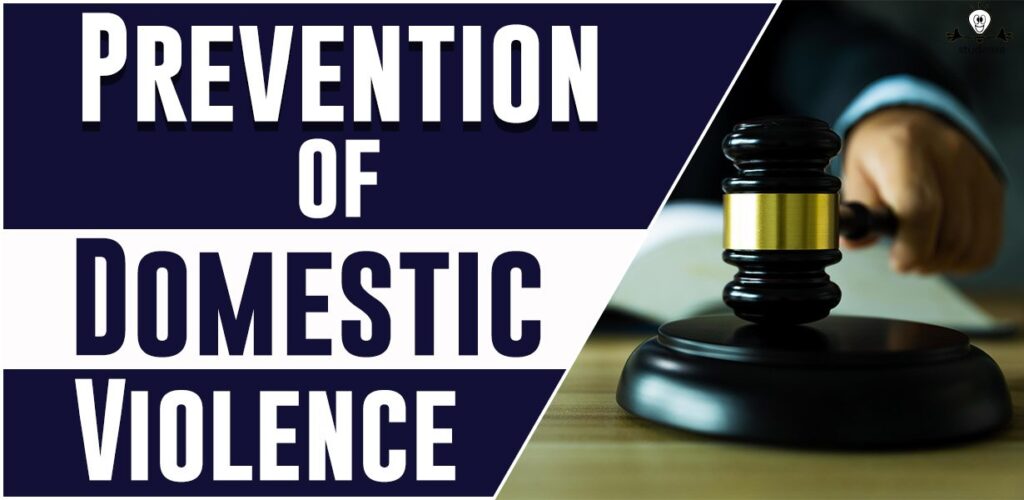
Domestic violence is a serious issue that affects millions of women worldwide. It is important to take preventive measures to stop it from happening. Here are some ways to prevent domestic violence:
Education and Awareness Programs
Education and awareness programs are essential in preventing domestic violence. These programs can help people understand the causes and effects of domestic violence, and how to prevent it. They can also provide information on how to recognize the signs of domestic violence and how to seek help.
Promote Gender Equality
Promoting gender equality is another way to prevent domestic violence. When women are treated equally to men, they are less likely to be victims of violence. This can be done by providing equal opportunities for education, employment, and participation in the society.
Intervention and Treatment Programs
Intervention and treatment programs can help both the victim and the perpetrator of domestic violence. These programs can provide counseling, therapy, and support to help them deal with the emotional and psychological effects of domestic violence.
Home Dispute Resolution Mechanisms
Home dispute resolution mechanisms can also be effective in preventing domestic violence. These mechanisms can help couples resolve their disputes without resorting to violence. They can also provide a safe and neutral environment for both parties to express their concerns.
Engage in Productive Activity
Engaging in productive activity can also prevent domestic violence. When people are busy with work or other activities, they are less likely to engage in violent behavior. This can be done by providing job opportunities and vocational training to both men and women.
Legal Measures to Prevent Domestic Violence
Legal measures can also be taken to prevent domestic violence. These measures can include restraining orders, background checks, and criminal prosecution of perpetrators. It is important to ensure that the legal system is effective in protecting victims of domestic violence.
Talk to Family Members | Friends
Talking to family members and friends can also prevent domestic violence. When people have a support system, they are less likely to engage in violent behavior. It is important to encourage open communication and provide support to those who may be experiencing domestic violence.
In conclusion, preventing domestic violence requires a multi-faceted approach. Education, awareness, gender equality, intervention and treatment programs, home dispute resolution mechanisms, engaging in productive activity, legal measures, and talking to family members and friends are all important in preventing domestic violence. By taking these measures, we can create a safer and more equal society for all.
Also Check:
Case Laws | Landmark Judgments
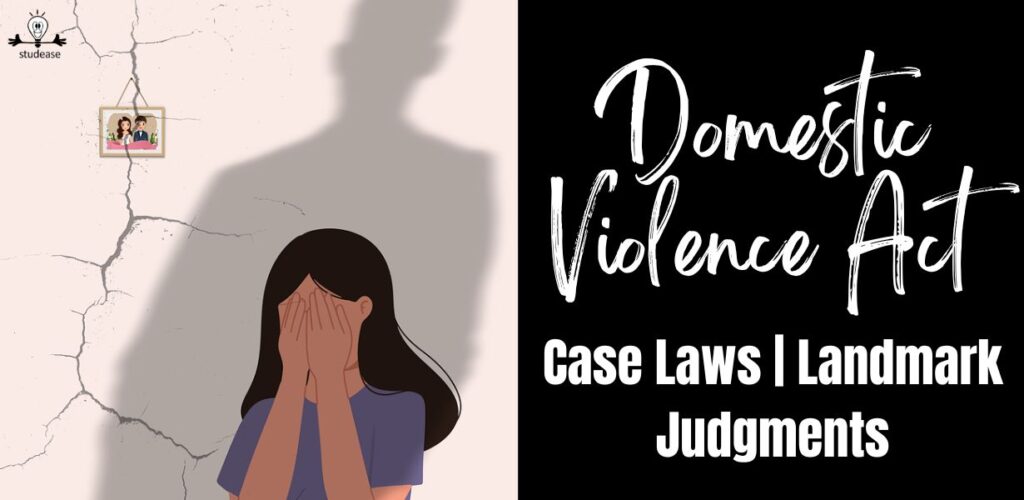
The Domestic Violence Act Protection of Women is a crucial legislation in India that aims to protect women from domestic violence. Over the years, several landmark judgments have been passed by Indian courts that have helped in the effective implementation of this act. In this section, we will discuss some of the most important case laws and judgments related to the Domestic Violence Act Protection of Women.
In Francis Coralie Mullin v. Union Territory Delhi, Administrator, AIR 1981, the Supreme Court stated, any act which damages or injures or interferes with the use of any limb or faculty of a person, either permanently or even temporarily, would be within the inhibition of Article 21.
In Chameli Singh v. State of U.P. ,1993, it was held that the right to life would include the right to shelter, distinguishing the matter at hand from Gauri Shankar v. Union of India, where the question had related to eviction of a tenant under a statute. S. 6 and 17 of the Domestic Violence Act reinforce this right. Under S.6, it is a duty of the Protection Officer to provide the aggrieved party accommodation where the party has no place of accommodation, on request by such party or otherwise. Under S.17, the party’s right to continue staying in the shared household is protected.
The scope of this piece of legislation has been expounded in plethora of judgements by the High Courts and the Supreme Court in India. For instance, in a recent judgment the High Court of Gujarat in the case of Bhartiben Bipinbhai Tamboli v. State of Gujrat and ors, 2018 (1) Crimes 11 (Guj) while extensively discussing the provisions under the Domestic Violence Act remarked that:
The domestic violence in this country is rampant and several women encounter violence in some form or the other or almost every day. However, it is the least reported form of cruel behaviour. A woman resigns her fate to the never-ending cycle of enduring violence and discrimination as a daughter, a sister, a wife, a mother, a partner, a single woman in her lifetime.
This non-retaliation by women coupled with the absence of laws addressing women‟s issues, ignorance of the existing laws enacted for women and societal attitude makes the women vulnerable. The reason why most cases of domestic violence are never reported is due to the social stigma of the society and the attitude of the women themselves, where women are expected to be subservient, not just to their male counterparts but also to the male relatives.
Women in Live in relationships covered under the Act A wider meaning to an “aggrieved person” under Section 2(a) of the Domestic Violence Act was conferred by the Supreme Court in the case of Veluswamy v. D. Patchaiammal, AIR 2011 SC, wherein the Court enumerated five ingredients of a live in relationship as follows:
- Both the parties must behave as husband and wife and are recognized as husband and wife in front of society.
- They must be of a valid legal age of marriage.
- They should qualify to enter into marriage eg. None of the partner should have a spouse living at the time of entering into relationship.
- They must have voluntarily cohabited for a significant period of time.
- They must have lived together in a shared household.
The Supreme Court also observed that not all live-in-relationships will amount to a relationship in the nature of marriage to get the benefit of Domestic Violence Act. To get such benefit the conditions mentioned above shall be fulfilled and this has to be proved by evidence.
Role of Government
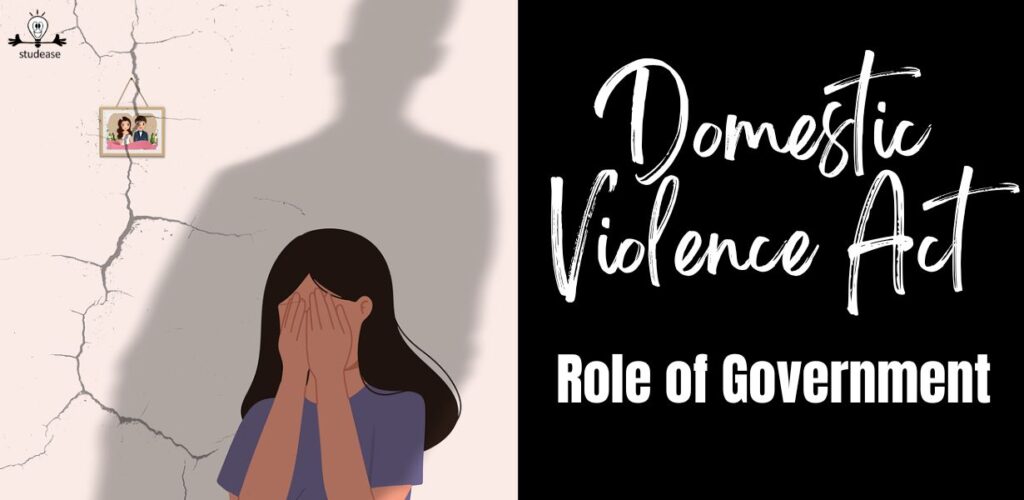
The Government plays a crucial role in protecting women from domestic violence. The Domestic Violence Act was enacted to provide legal protection to women who are victims of domestic violence. The Act recognizes the right of every woman to live with dignity and to be free from violence and abuse.
The Act mandates the government to take measures to prevent and eliminate violence within domestic relationships. It provides for the protection of victims of domestic violence and their children, who witness or experience domestic violence.
Under the Act, the Government is required to establish protection officers in every district to provide assistance to victims of domestic violence. These officers are responsible for ensuring that victims receive medical treatment, legal aid, and counseling services. They are also responsible for ensuring that victims are provided with temporary shelter if needed.
The Government has also established special courts to deal with cases of domestic violence. These courts are designed to provide speedy justice to victims of domestic violence. They are equipped with trained judges and prosecutors who are well-versed in the legal provisions of the Act.
Overall, the government has an important role to play in protecting women from domestic violence. The Domestic Violence Act and other laws provide a legal framework for protecting women and ensuring that perpetrators of domestic violence are held accountable for their actions.
Conclusion
To conclude, the Protection of Women from Domestic Violence Act is an essential tool in ensuring the safety and protection of women who are victims of domestic violence. The Act provides a comprehensive legal framework for addressing the issue of domestic violence and ensuring that perpetrators of such violence are held accountable for their actions.
It also provides for a range of remedies that can be sought by victims of domestic violence, including protection orders, monetary relief, and custody of children.
One of the key strengths of the Act is its emphasis on prevention and protection. It recognizes the importance of providing support and assistance to victims of domestic violence, including counseling, medical aid, and legal aid. The Act also provides for the appointment of Protection Officers who can assist victims in accessing these services and provide them with the necessary protection.
However, there are also some limitations to the Act. The Act is primarily focused on protecting women from domestic violence and does not provide equal protection to men who may also be victims of domestic violence. There is also a need to improve the implementation and enforcement of the Act, as many victims of domestic violence are still unable to access the protection and remedies provided by the Act.
Overall, the Protection of Women from Domestic Violence Act is an important step towards addressing the issue of domestic violence in India. However, there is still a long way to go in ensuring that all victims of domestic violence are able to access the protection and support they need to rebuild their lives.
What Next?
We at studease encourage students to prepare well and stay informed. For more Content, Join our Telegram group to stay updated.
Join: studease Telegram Channel
Follow us: instagram
Subscribe: studease Youtube Channel
Download studease App:
👉 Android: https://edustan.page.link/Wbe5
👉 iOS users: Download Myinstitute app, enter org code – studease







